Pregnancy is a time of joy and excitement. But while you may be filled with…
Read MoreAlarm bells inevitably tend to go off when you see your child scratching their head. Yup, it could be those dreaded head lice. Head lice are actually a parasite known as Pediculus humanus capitis. They can attach themselves to your hair and are mostly found on the scalp. The itching that you experience when you have lice is a reaction to their bites. People with lice may also experience a tickling feeling, as though something is moving through their hair. These parasites can even disturb your sleep since they tend to be more active at night.[1][Parasites].CDC.
In ayurveda, lice are categorized as a bahyaja krimi, that is an external worm or microbe. The ancient physician Acharya Harita specifically identified lice as kesh akita or yukta. An imbalance of kapha dosha is considered to promote krimi infestation. Factors such as over sweating, excessive exposure to moisture, excessive intake of certain foods such as madhura (sweet) or amla (sour) foods, jaggery, milk, til oil, fish, as well as excessive sleep during the day, and a sedentary lifestyle are thought to contribute to the growth of krimi.
It’s important to treat lice as soon as you realize you’ve got them. Here are a few natural remedies that can help:
Special fine-toothed combs that are used for removing lice are available. Choose a comb with flat teeth that are spaced around 0.2 to 0.3mm apart. Combs with teeth that are closer together can be helpful in removing eggs once you’ve dealt with the lice. Follow this procedure to use the comb effectively:
Here’s a natural and easy solution to those pesky lice- coconut oil and star anise oil. One study found that spraying a solution of these – 2 applications 9 days apart – was effective at getting rid of lice. In fact, it was found to be more effective than a medication used to treat lice infestations. The researchers suggest that this remedy works by coating the lice with an oily film and suffocating them.[3]Burgess, Ian F., Elizabeth R. Brunton, and Nazma A. Burgess. “Clinical trial showing superiority of a coconut and anise spray over permethrin 0.43% lotion for head louse infestation, … Continue reading
Neem is highly valued in ayurveda for its medicinal properties. In fact, it’s known as “sarva roga nivarini”, that is, it is considered to cure all ills. And studies show that it can help you clear out lice as well. According to a study, children who were infested with lice benefited from treatment with a neem seed extract shampoo. This shampoo was found to be highly effective against lice after it was left in for just 10 minutes.[4]Abdel-Ghaffar, Fathy, and Margit Semmler. “Efficacy of neem seed extract shampoo on head lice of naturally infected humans in Egypt.” Parasitology Research 100, no. 2 (2007): 329-332. Meanwhile, another study found that neem leaf extracts are also effective against lice.[5]Aathira, E. P., and A. Suganthi. “PHYTOCHEMICAL ANALYSIS AND ANTI-HEAD LICE ACTIVITY.” (2019).
Sitaphal or custard apple seeds have traditionally been used in ayurveda for treating lice.[7]Verma, Prashant, and Chaitanya Namdeo. “Treatment of pediculosis capitis.” Indian journal of dermatology 60, no. 3 (2015): 238.And scientific research backs up this traditional usage. One study found that the application of custard apple extracts killed around 93 to 97% of lice after 3 hours.[8]Tiangda, C. H., W. Gritsanapan, N. Sookvanichsilp, and A. Limchalearn. “Anti-headlice activity of a preparation of Annona squamosa seed extract.” The Southeast Asian journal of tropical … Continue reading
Clove oil can also help treat head lice. One study found that over 90% of lice that were exposed to 30 minutes of contact with clove oil died within 2 hours. A compound known as eugenol which is present in clove oil is thought to be manly responsible for this effect.[9]Candy, Kerdalidec, Patrick Nicolas, Valérie Andriantsoanirina, Arezki Izri, and Rémy Durand. “In vitro efficacy of five essential oils against Pediculus humanus capitis.” Parasitology … Continue reading
Cinnamon or dalchini can be found in the masala box of most Indian households. Known as “tvak” in Sanskrit, this common spice holds an esteemed place in Ayurveda and has always been valued for its germicidal properties.[11][Important uses of Dalchini].Central Council for Research in Ayurvedic Sciences. And research shows that it acts against lice too. Many components present in cinnamon oil such as benzaldehyde, Salicylaldehyde, benzyl alcohol, cinnamaldehyde etc. have been found to be effective against lice.[12]Yang, Young-Cheol, Hoi-Seon Lee, Si Hyeock Lee, J. Marshall Clark, and Young-Joon Ahn. “Ovicidal and adulticidal activities of Cinnamomum zeylanicum bark essential oil compounds and related … Continue reading
Tea tree oil is distilled from the leaves of the tea tree which grow in Australia. And it has traditionally been used by the people of Australia for its germicidal and medicinal properties.[14][Tea Tree Oil]. National Institutes of Health.And research indicates that this beneficial oil is effective against lice.[15]Di Campli, Emanuela, Soraya Di Bartolomeo, Patricia Delli Pizzi, Mara Di Giulio, Rossella Grande, Antonia Nostro, and Luigina Cellini. “Activity of tea tree oil and nerolidol alone or in … Continue reading
Citrusy grapefruits are probably the farthest thing from your mind when you think about dealing with lice. But this surprising ingredient can actually help tackle lice. One study found that a shampoo containing grapefruit extracts was effective at killing mice when it was applied for 10 to 20 minutes.[17]Abdel-Ghaffar, Fathy, Margit Semmler, Khaled Al-Rasheid, Sven Klimpel, and Heinz Mehlhorn. “Efficacy of a grapefruit extract on head lice: a clinical trial.” Parasitology research 106, … Continue reading
Head lice commonly spreads through head to head or hair to hair contact. That’s why they’re often found in children, because children tend to put their heads together when they play. They can also sometimes spread through shared clothing which lice can crawl onto. In rare cases, you may get infested by a louse that’s dropped onto furniture or a carpet. Here are a few steps that’ll help you prevent lice from spreading:
References
| ↑1 | [Parasites].CDC. |
|---|---|
| ↑2 | [Head lice and nits].NHS Inform. |
| ↑3 | Burgess, Ian F., Elizabeth R. Brunton, and Nazma A. Burgess. “Clinical trial showing superiority of a coconut and anise spray over permethrin 0.43% lotion for head louse infestation, ISRCTN96469780.” European journal of pediatrics 169, no. 1 (2010): 55. |
| ↑4 | Abdel-Ghaffar, Fathy, and Margit Semmler. “Efficacy of neem seed extract shampoo on head lice of naturally infected humans in Egypt.” Parasitology Research 100, no. 2 (2007): 329-332. |
| ↑5 | Aathira, E. P., and A. Suganthi. “PHYTOCHEMICAL ANALYSIS AND ANTI-HEAD LICE ACTIVITY.” (2019). |
| ↑6, ↑10, ↑16 | [Are Essential Oils Safe for Children?]. John Hopkins Medicine. |
| ↑7 | Verma, Prashant, and Chaitanya Namdeo. “Treatment of pediculosis capitis.” Indian journal of dermatology 60, no. 3 (2015): 238. |
| ↑8 | Tiangda, C. H., W. Gritsanapan, N. Sookvanichsilp, and A. Limchalearn. “Anti-headlice activity of a preparation of Annona squamosa seed extract.” The Southeast Asian journal of tropical medicine and public health 31 (2000): 174-177. |
| ↑9 | Candy, Kerdalidec, Patrick Nicolas, Valérie Andriantsoanirina, Arezki Izri, and Rémy Durand. “In vitro efficacy of five essential oils against Pediculus humanus capitis.” Parasitology research 117, no. 2 (2018): 603-609. |
| ↑11 | [Important uses of Dalchini].Central Council for Research in Ayurvedic Sciences. |
| ↑12 | Yang, Young-Cheol, Hoi-Seon Lee, Si Hyeock Lee, J. Marshall Clark, and Young-Joon Ahn. “Ovicidal and adulticidal activities of Cinnamomum zeylanicum bark essential oil compounds and related compounds against Pediculus humanus capitis (Anoplura: Pediculicidae).” International journal for parasitology 35, no. 14 (2005): 1595-1600. |
| ↑13 | [Are Essential Oils Safe for Children?](https://www.hopkinsallchildrens.org/ACH-News/General-News/Are-Essential-Oils-Safe-for-Children “Are Essential Oils Safe for Children?”). John Hopkins Medicine. |
| ↑14 | [Tea Tree Oil]. National Institutes of Health. |
| ↑15 | Di Campli, Emanuela, Soraya Di Bartolomeo, Patricia Delli Pizzi, Mara Di Giulio, Rossella Grande, Antonia Nostro, and Luigina Cellini. “Activity of tea tree oil and nerolidol alone or in combination against Pediculus capitis (head lice) and its eggs.” Parasitology research 111, no. 5 (2012): 1985-1992. |
| ↑17 | Abdel-Ghaffar, Fathy, Margit Semmler, Khaled Al-Rasheid, Sven Klimpel, and Heinz Mehlhorn. “Efficacy of a grapefruit extract on head lice: a clinical trial.” Parasitology research 106, no. 2 (2010): 445-449. |
| ↑18 | [Prevention & Control]. CDC. |

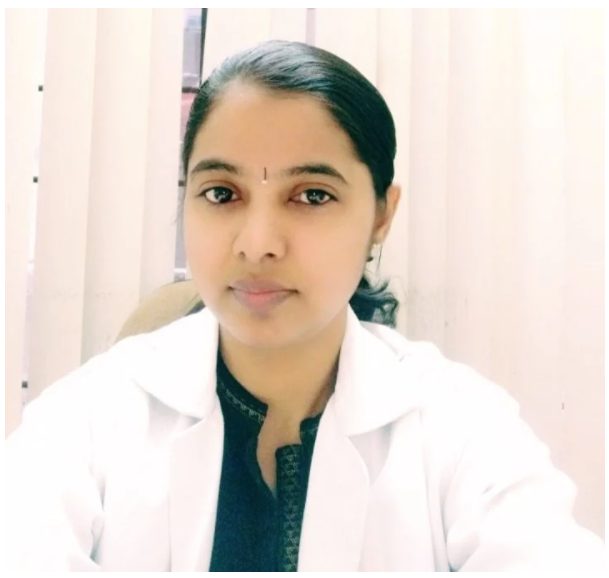
Dr. Manjula has 12 years of experience in the field of Ayurveda and worked as a Consultant and General Physician for over 5 years before starting her private practice. In addition to BAMS, she also has an Advanced Diploma in Clinical Research and is trained in Panchkarma. She is an expert at diagnosis of the root cause and planning effective treatment for multiple issues.
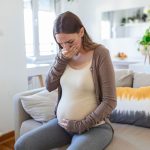
Pregnancy is a time of joy and excitement. But while you may be filled with…
Read More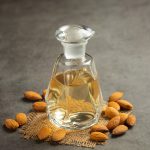
Sometimes hair loss can be caused by fairly simple things like hot oil hair treatments,…
Read More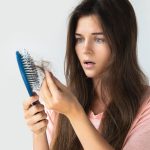
We can’t help but get a little worried when we notice hair falling out as…
Read More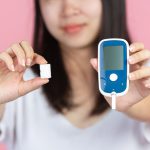
Many of us fear diabetes - after all, it’s linked to a host of complications…
Read More